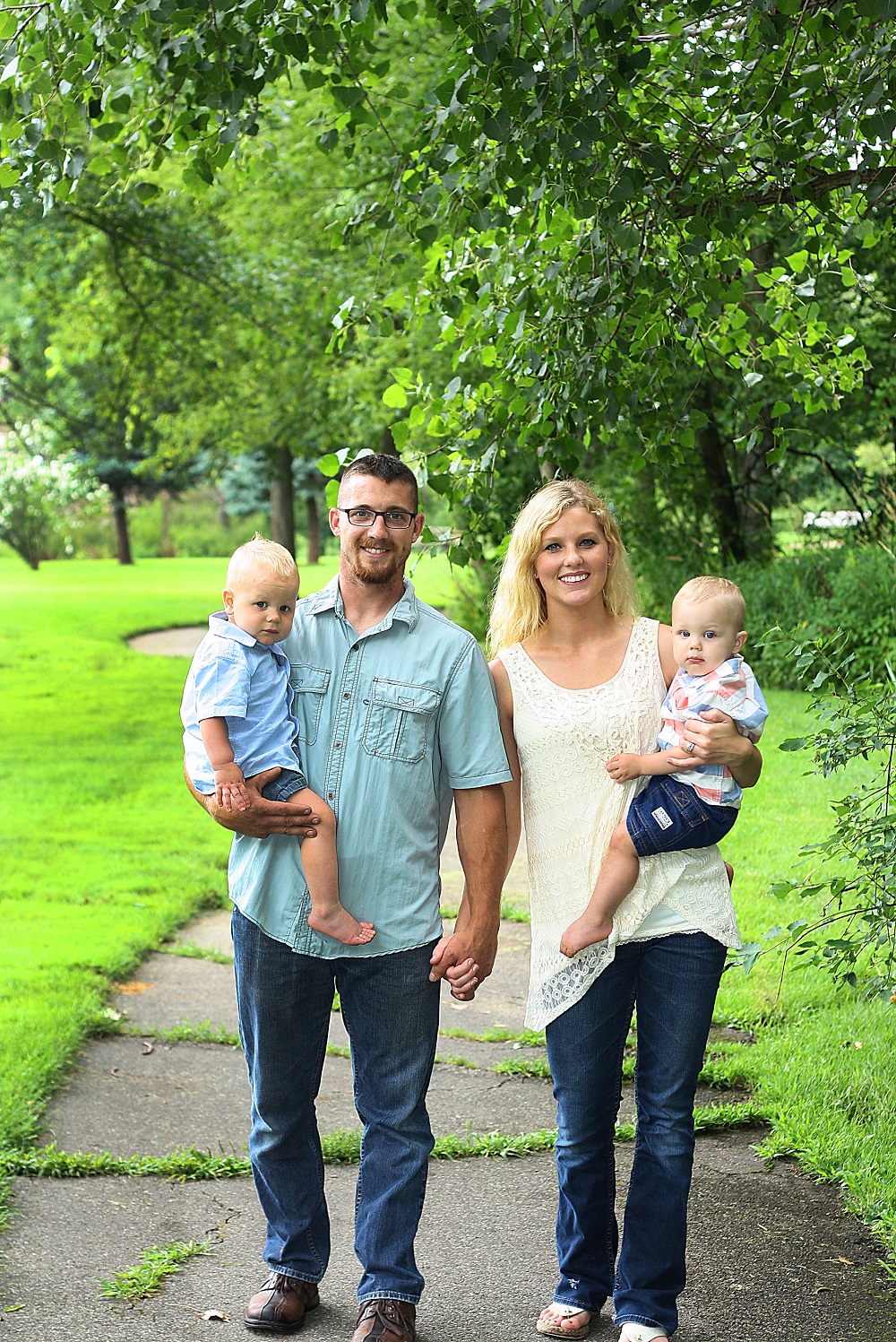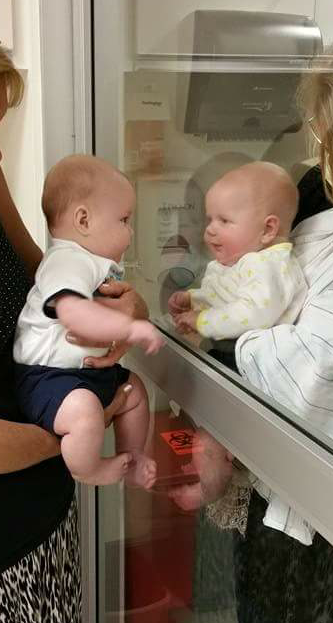Happy to have given birth in January 2015 to two seemingly healthy boys, Levi and Colton, after an uneventful pregnancy, Kala Looks gave little thought to the routine heel prick of newborn screening. At 23 and 24, she and her husband, Phillip, were high school sweethearts starting a family with a pair of fraternal twins.
Two weeks later, a Michigan state health official called. “Something came up on Levi’s screen,” the official said. “You need to bring him in right away.” Three weeks and numerous blood draws later, the Looks had a diagnosis: Severe combined immune deficiency (SCID), otherwise known as “bubble boy” disease. Levi’s blood had only a few T cells, crucial ingredients of the immune system, and those were likely his mother’s lingering cells. Soon, he would have no immune system at all.

That Levi and Colton are now healthy, active toddlers, climbing onto the dining room table and leafing through picture books and starting to talk, is thanks to newborn screening and a pioneering gene therapy trial at Dana-Farber/Boston Children’s Cancer and Blood Disorders Center.
Had Levi been born before October 2011, when Michigan began screening all newborns for “bubble boy” disease, he might have died of overwhelming infection before his first birthday. Instead, Levi has a functioning immune system after being treated in Boston as part of an international clinical trial of gene therapy for boys born with X-linked SCID.
He is one of three boys treated on the trial’s U.S. arm whose disease was picked up by universal newborn screening, now standard in 42 states. The other four boys treated at U.S. sites include one South American boy diagnosed at birth because an older brother had died of the disease, and three boys – from South America or states without newborn screening at the time – who were diagnosed after suffering life-threatening infections that their bodies had trouble shaking.
Once diagnosed with SCID, Levi was confined to his home with no outside visitors allowed except his grandparents, and everyone in the house was instructed to wear masks. Levi started broad spectrum antibiotics. He needed a stem cell transplant, but that couldn’t be performed until he was three months old.
Read More:
“Levi was five weeks old. Starting to pick his head up. He had never been sick. We were just learning to cope with having twins,” Kala recalls. “It was terrifying. We’re young. Suddenly we had to grow up fast. We had to buckle down and do what was right for him.”
Doing what was right for Levi proved to be a difficult task. Colton, Levi’s twin, was not a match for the stem cell transplant. The family had a bone marrow drive, but still no match. There was an umbilical cord that was a partial match, and doctors offered the option of using Kala’s cells as a half match. Then their physician at the University of Michigan told the Looks about the gene therapy trial at Dana-Farber/Boston Children’s. Three times Kala and Phil spoke with Sung-Yun Pai, MD, leader of the trial’s Boston site.
“I had never heard of gene therapy,” Kala says. “We prayed about it for a couple of weeks. I read about Agustin, the Argentinian boy who’d been treated with gene therapy, and it began to make more sense.”

On May 11, 2015, Pai harvested Levi’s bone marrow and sent his cells to the laboratory, where a so-called viral vector – a deactivated virus – inserted the corrected gene into his marrow cells’ DNA. On May 15, Kala pushed a button with Phil right beside her, and the new cells were delivered to their baby boy via an intravenous transfusion line. “Just seeing that white marrow go in, and knowing it was changed, was really something,” Kala says.
Thanks to newborn screening, Levi had never been sick when he arrived in Boston for treatment – but the Looks had a scare when Levi developed a cold before the new, modified cells had taken hold. Then the gene therapy started to kick in, and Levi’s running nose slowly went away.
One side effect of newborn screening has been a clearer understanding of the incidence of SCID. It was once thought that the immune disorder affected one in 100,000 live births. Since the adoption of widespread newborn screening, starting with Wisconsin in 2008, it is now estimated that the disorder affects one in 58,000 live births, with specialists positing that many infant deaths from infection were, in fact, due to SCID.
In November, Levi had his regular, periodic blood draw at the University of Michigan, and the sample was sent to Boston for analysis. “Levi’s doing great. We can see the corrected gene in his T cells, and his blood work looks essentially normal,” Pai says. “He’s thriving and growing, and you would never know the difference between him and his twin brother.”
And so Kala and Phil Looks settle into the lively, hectic routine of raising two healthy toddlers. Kala, after taking a year off to manage Levi’s care, is back at her job as a medical assistant, and Phil, a diesel mechanic, is no longer missing a lot of work.
“We wouldn’t have our son here today without newborn screening,” Kala says. “If we had him earlier or in a different state, it wouldn’t have been caught and there could have been a totally different outcome.”
